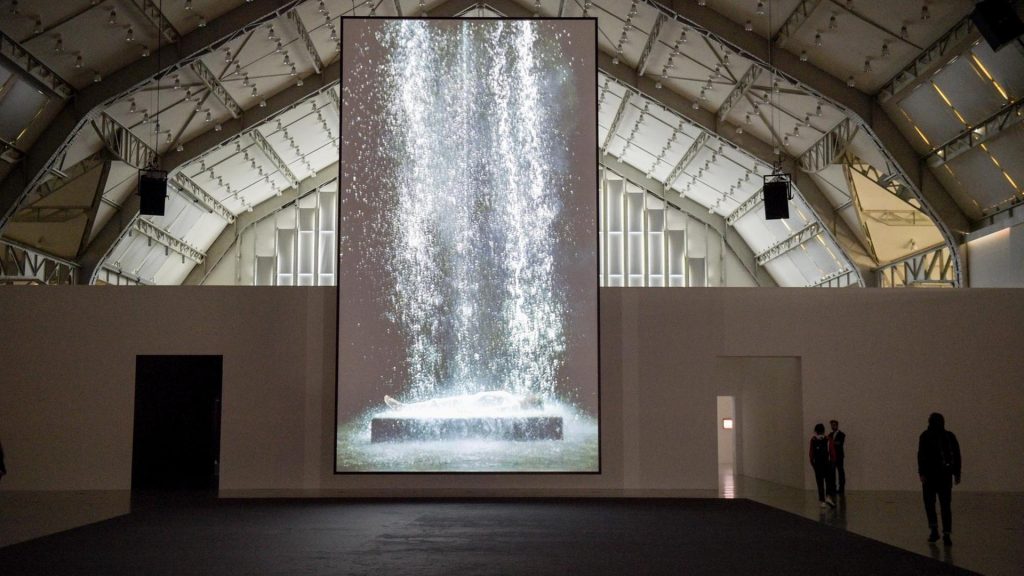
On a bright April day earlier this year, I traveled all the way to Liege to visit Bill Viola’s retrospective in Musée de la Boverie. It was not easy to get there by public transport, and my study schedule was packed, which hindered me from going for quite a while until the show lasted for only another few weeks. Having traveled 4 hours up and down, and having spent almost 6 hours in the exhibition itself, my day was filled with wonder and gratitude by finally seeing his works in person on such a grand scale.
Three months later, on July 12th, Bill Viola passed away due to Alzheimer’s disease.
Apart from the profound shock and sadness, I started to ponder what is video art for us today and how Viola’s legacy can be passed on.
As a new medium technology emerged in the 1960s, video art was adopted as a main representation method by many experimental artists like Nam June Paik, Peter Campus, and Bill Viola himself. With the advent of digital recording equipment, artists began to explore digital technology as a new way of expression. However, in recent years, the term “video art” has been unfairly associated with novelty for novelty’s sake, which has been criticized as a lack of craft or too much technological redundancy in covering human truths. Especially in today’s “New Media art” terminology and artistic context, video art has been incorporated into this more encompassing, eclectic genre.
But in Bill Viola’s video installations, technology is never a goal in itself. As he claimed: “I see that media technology is not at odds with our inner selves, but in fact, a reflection of it.” Coming of age alongside the development of video, Viola experimented with new technologies to explore the furthest reaches of the expressive possibilities of this new medium. His monumental work Tristan’s Ascension (The Sound of a Mountain Under a Waterfall), 2005 perfectly exemplified his idea. It was created for a staging of Wagner’s Tristan and Isolde and has since been re-edited to form a standalone installation. Viola presented the image on a gigantic screen situated in the center of a vast room, resembling an altar in the church that is awe-inspiring. “Tristan’s Ascension” depicts a soul’s rise after death, drawn up in a reverse-flowing waterfall. A man lies on a stone slab in an empty room as droplets lift from the ground, turning into a deluge. The water stirs his body, bringing him to life. His arms move, his torso arches, and finally, his entire body is lifted upward by the rushing water, disappearing above. As the torrent subsides, only the empty, glistening slab remains.
The tremendous massiveness and dramatic grandeur were intensified by the extreme slow motion, as well as the specially configured 4.1 surround sound system arrays the sound in the vertical dimension of the space. The exquisite techniques adopted in this video resonated with Viola’s philosophical interpretation of technology.
He once said, “I gradually realized that the act of perception was in fact a viable form of knowledge in and of itself, and not merely a kind of phenomenon. This meant that when I held the video camera and microphone, I was holding a philosophical system, not just some image and sound gathering tool.” He is continuously using this system to question, project, and reflect on his own philosophical thinking. While technology is constantly evolving, the fundamental logic of this philosophical system remains, which can be applied to any type of new media and new artistic practice.
Bill Viola’s innovations cemented video as a crucial medium in contemporary art. He profoundly influenced generations of artists and audiences alike. Being able to experience one of his installations was a transformative event for me.
Reference:
Bill Viola: When video art becomes life, death, and transcendence. (2017, July 5). Creative Boom. link
Biography. (n.d.). link


Recent Comments